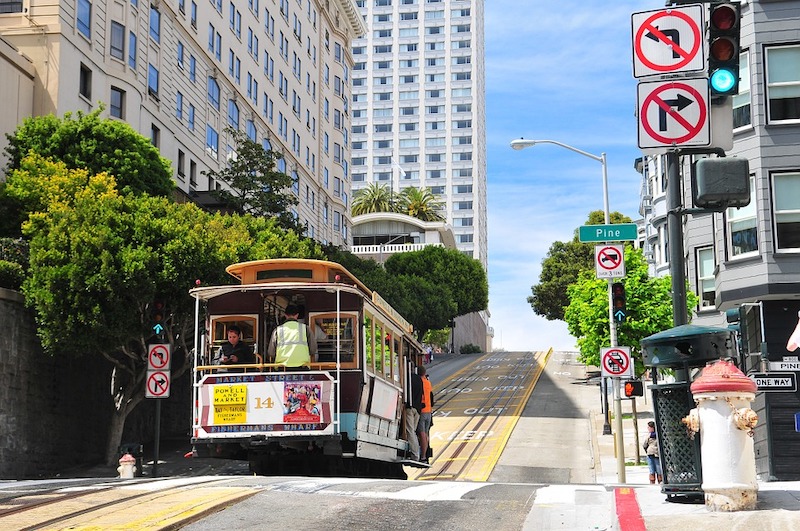A 1.5% payroll tax break for companies moving to San Francisco’s Mid-Market neighborhood is getting mixed reviews.
What became known as the Twitter tax break has boosted business activity in the area, but may have also accelerated the area’s problems, according to a report by the San Francisco Chronicle.
The city’s chief economist says that between 2010 and 2017, Mid-Market produced $6 million more in payroll and gross receipts taxes and added $750,000 in sales taxes to the city’s general fund than it would have if it grew at the same rate as the rest of the city.
In that period, 59 new companies large enough to have to report their payrolls to the city either moved to, or were created in, Mid-Market. The number of retailers grew by 3% in the neighborhood while declining by 1% citywide. The cost to the city was $70 million in lost tax revenue.
The negatives:
— Gentrification has led to higher housing costs and the growth of the district’s homeless population by 1,600 people between 2011 and 2017
— Drug dealing has increased in the neighborhood
— Some companies have failed to follow through on promises they made to aid non-profit organizations in the neighborhood
— Retail vacancies continue to plague the district’s main street
The tax break faces a May 20 expiration, and the consensus is that the city no longer needs to give major tech companies targeted tax breaks, the Chronicle reports.
Related Stories
| Nov 23, 2011
USGBC launches app lab for LEED certification process
The U.S. Green Building Council has released the App Lab, a searchable catalog of third-party apps that are integrated with LEED data.
| Nov 23, 2011
Document gives advice on stormwater runoff management
The report, “Rooftops to Rivers II,” provides tips on how cities can use smart infrastructure and green building design to minimize pollution from stormwater runoff and other wastewaters.
| Nov 23, 2011
Zoning changes proposed to make New York City buildings greener
New York City will introduce new zoning proposals next month that would make it easier for building owners to add features that will make their properties more sustainable.
| Nov 18, 2011
AGC offers webinar on Davis-Bacon compliance
Webinar to be held in two sessions, Dec. 7 and 8 from 2:00-3:30 p.m. EST.
| Nov 18, 2011
New green construction code may help push LEED standards higher
The International Green Construction Code (IgCC) is expected to set a floor for building standards and may create the opportunity for LEED certifications to push toward higher ceilings.
| Nov 18, 2011
New OSHA fall safety rule could save contractors money on insurance premiums
The new Occupational Safety and Health Administration rule requiring employers operating in the residential construction industry to use the same methods of fall protection that historically have been used in the commercial construction industry could save them money.
| Nov 18, 2011
Some believe new Austin building code will help mom and pop shops
Austin, Texas has proposed building codes that require wider sidewalks and call for buildings to be closer to sidewalks along a 3.5-mile stretch of highway.
| Nov 11, 2011
AIA: Engineered Brick + Masonry for Commercial Buildings
Earn 1.0 AIA/CES learning units by studying this article and successfully completing the online exam.
| Nov 10, 2011
WaterSense standard for weather-based irrigation controllers unveiled
The U.S. Environmental Protection Agency’s (EPA) WaterSense program has released a final specification for weather-based irrigation controllers—the first outdoor product category eligible to earn the WaterSense label.
| Nov 10, 2011
Advocate seeks noise reduction measures in California building codes
A former chief building inspector for San Francisco wants to enact building codes that would limit noise levels in restaurants and other spaces open to the public.















